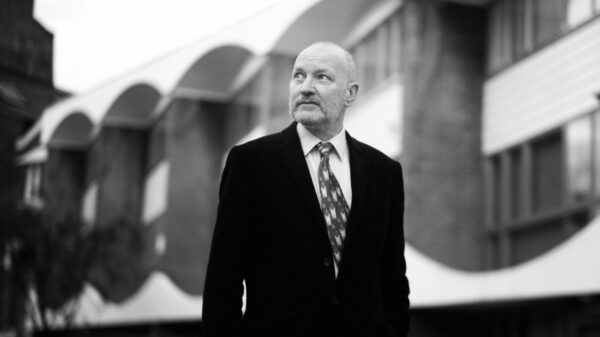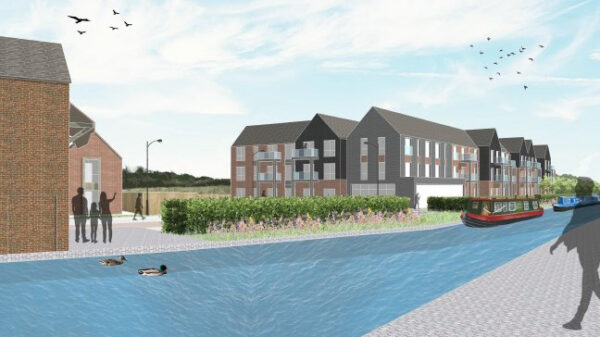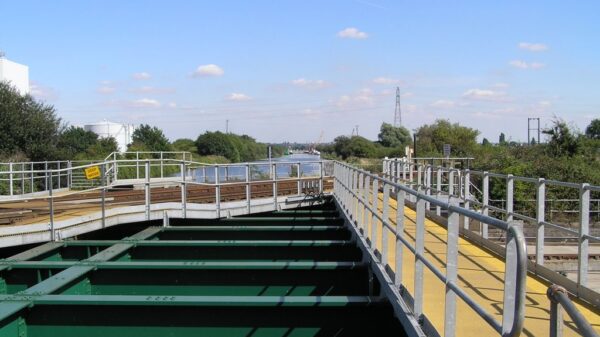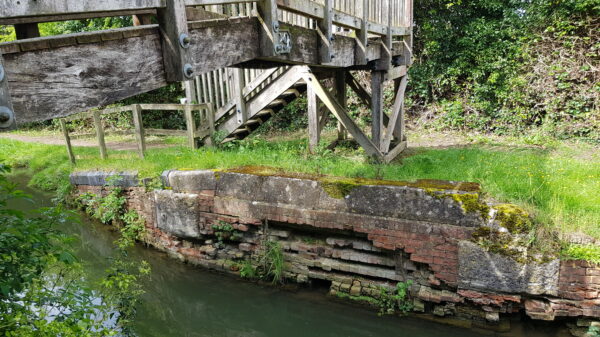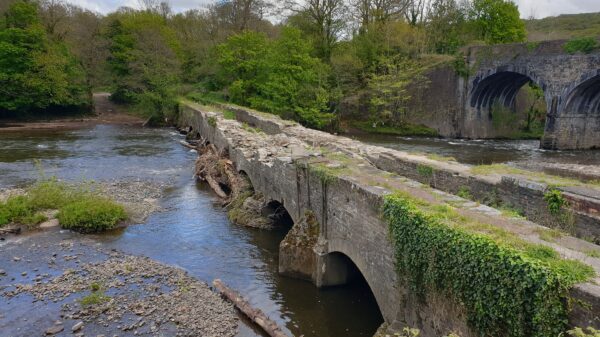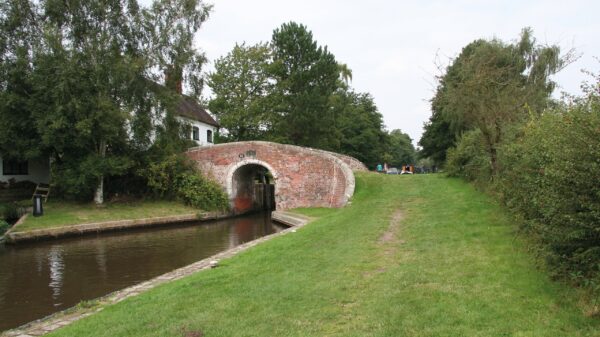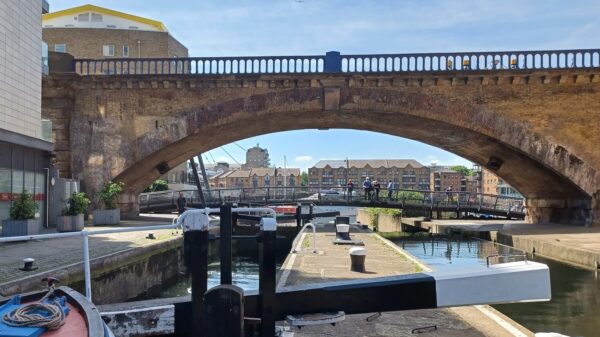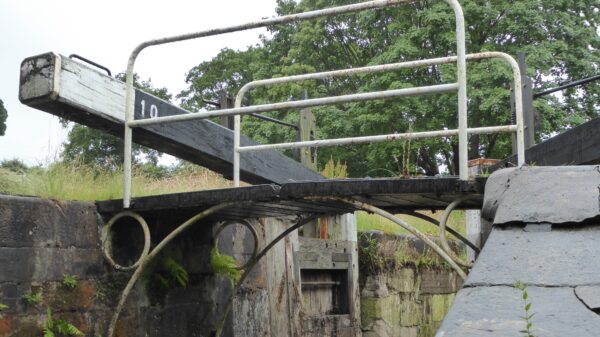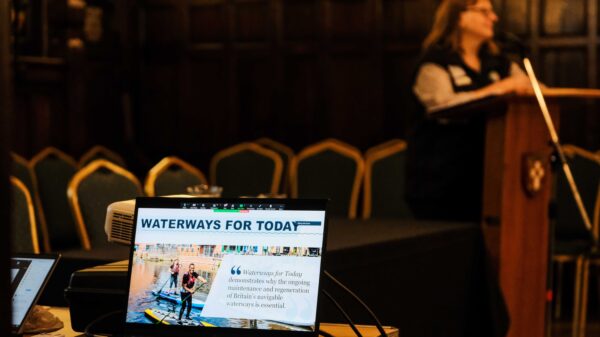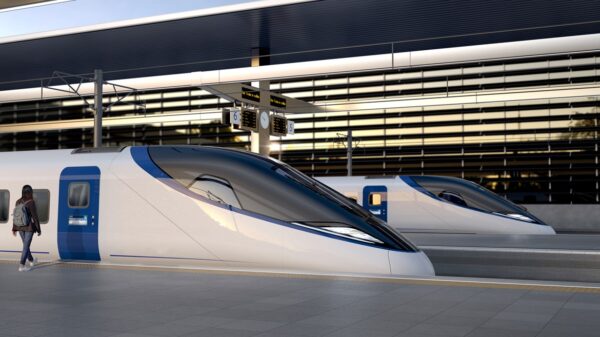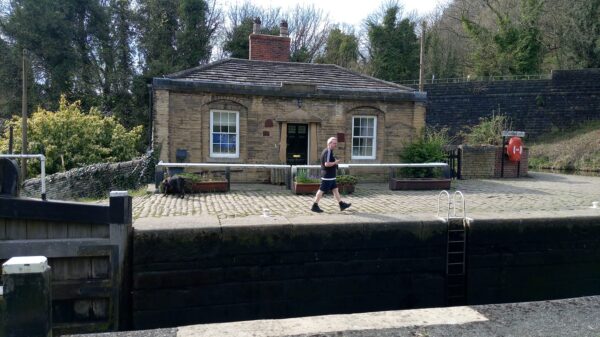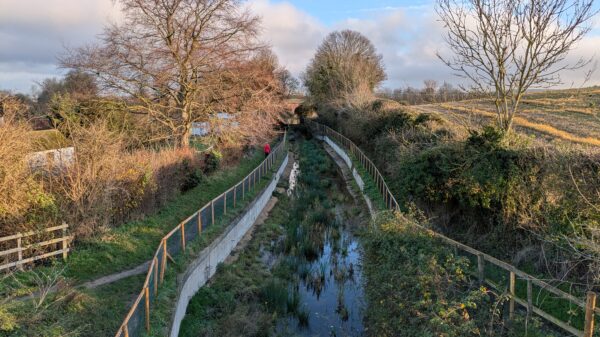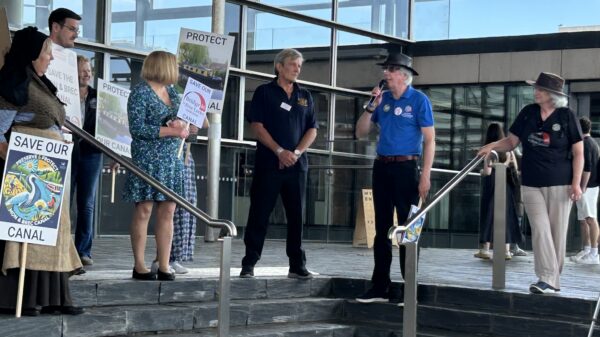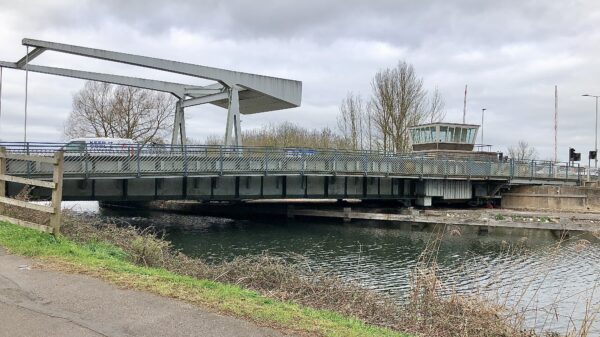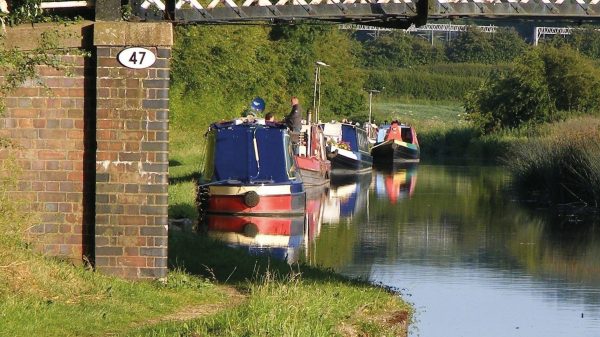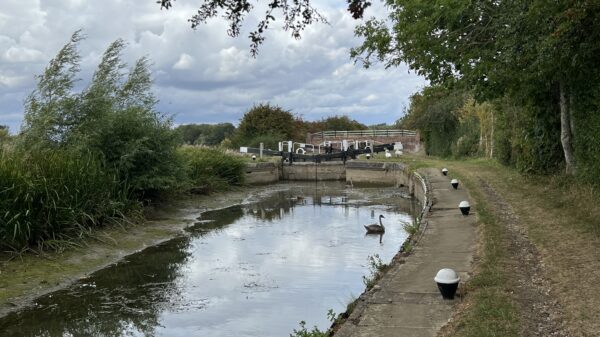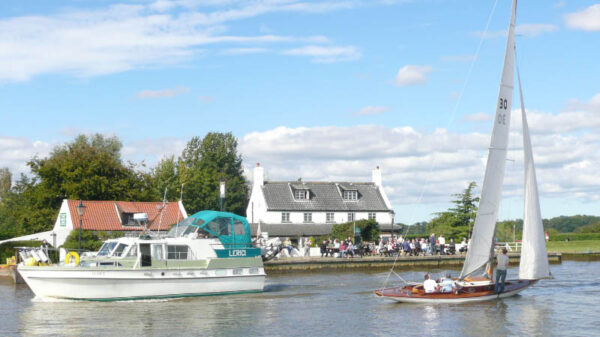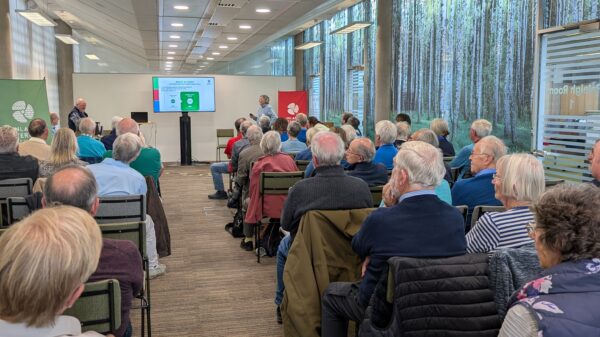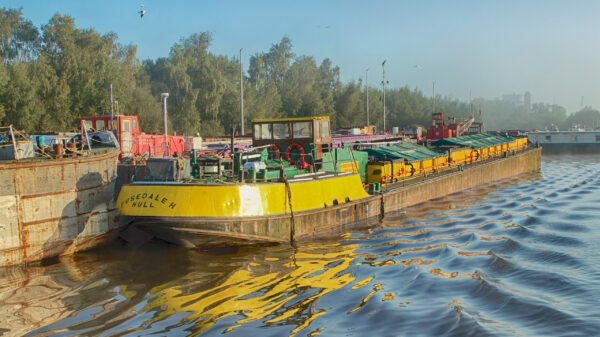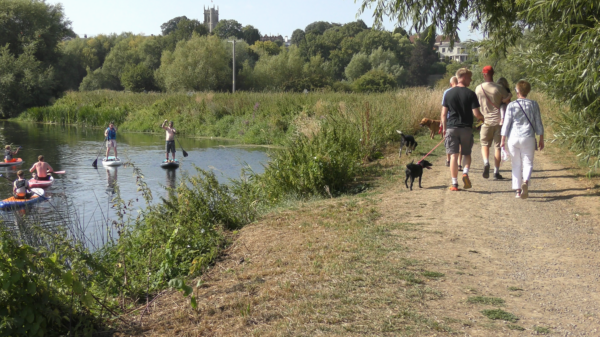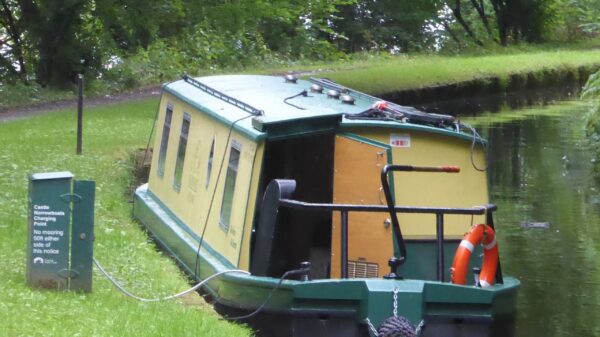IWA’s Sue O’Hare walks us through the history and heritage of Britain’s bridges, how they have developed over time and highlights some fascinating but lesser-known bridges as well as better-known ones.
Bridge, Aqueduct, Tunnel?
The Oxford English Dictionary defines a bridge as “a structure carrying a road, path, railway, etc. across a stream, river, ravine, road, railway etc.” For the purposes of this article we will focus on bridges over waterways, rather than aqueducts carrying waterways themselves. Of course there are also aqueducts which carry one waterway over another. The main connected inland waterway network of Britain has six examples of these. But even having narrowed our scope, it is still a bit blurry. When does a bridge become a tunnel?
The Earliest River Crossings
Places where rivers could be crossed are historically important as they often developed into settlements. Many town or village names reflect these origins (for instance, both Cambridge and Oxford).
The earliest river crossings were probably fords, shallow places where people, animals and vehicles could cross. The Romans sometimes paved the fords to make crossing easier. For example, this was done at Littleborough between Torksey and Gainsborough, probably the lowest crossing of the Trent.
Ferries were the next stage of evolution and also have a long history. The Queensferry Passage route across the Firth of Forth dates from the 11th century. A river crossing service across the Mersey is said to have operated since the 1150s.
Medieval River Bridges
Bridges were much more expensive than fords or ferries. That said, they were safer, had higher capacity and could be used in most conditions. The Romans built many bridges in the UK, but they were constructed of timber and none have survived. Again on the Trent, there was a Roman bridge just below the site of the current Cromwell Lock at the head of the tidal section.
Our oldest surviving waterway bridges are medieval in origin. Perhaps the oldest is High Bridge in Lincoln, which was built about 1160 and carries the High Street across the Witham Navigation. It is likely that it replaced a timber bridge carrying the Roman road Ermine Street, possibly originally built as early as the 1st century AD. The bridge now supports a row of Tudor timber-framed shops. Bridges like this were common in the Middle Ages, the best known being the old London Bridge.
Most medieval bridges were removed a long time ago because they obstructed the river flow and shipping. Only High Bridge and Pulteney Bridge in Bath survive in Britain as waterway bridges with buildings on them. The narrow, crooked arch of High Bridge is often called the ‘Glory Hole’. It was also called the ‘Murder Hole’ in the medieval period, when it was said that murder victims would be dropped in the river there and eventually float out to sea. The bridge limits the size of boats that can navigate between the Fossdyke at Brayford Pool and Boston and the sea.

Ferrybridge in Yorkshire demonstrates the evolution from ferry to bridge in its name. It stands where the Great North Road (the A1) crosses the River Aire. The first bridge was built in 1198 but collapsed in 1228, resulting in the drowning of crusaders passing over at the time. In 1804, a larger bridge replaced the rebuilt bridge. Architect John Carr of York designed it to accommodate the increasing traffic on both the road and the Aire and Calder Navigation. In turn this was superseded by the modern A1 bridge in 1967.
The River Avon has a good number of bridges of medieval origins, some of which can be quite challenging to both boaters and vehicle drivers. A good example is Bidford Bridge in Bidford-on-Avon, remembered by Shakespeare as “drunken Bidford”, where the single navigation arch is unusually close to one bank of the river. Similarly the navigation arch of the medieval bridge over the River Medway at East Farleigh in Kent is not in line with the adjacent lock. The bridge dates from the 14th century. It is set amid orchards and oasthouses and has been described as ‘the finest bridge in the south of England’. Cromwell’s parliamentary troops marched over it in 1648 on their way to fight the Royalists in Maidstone.
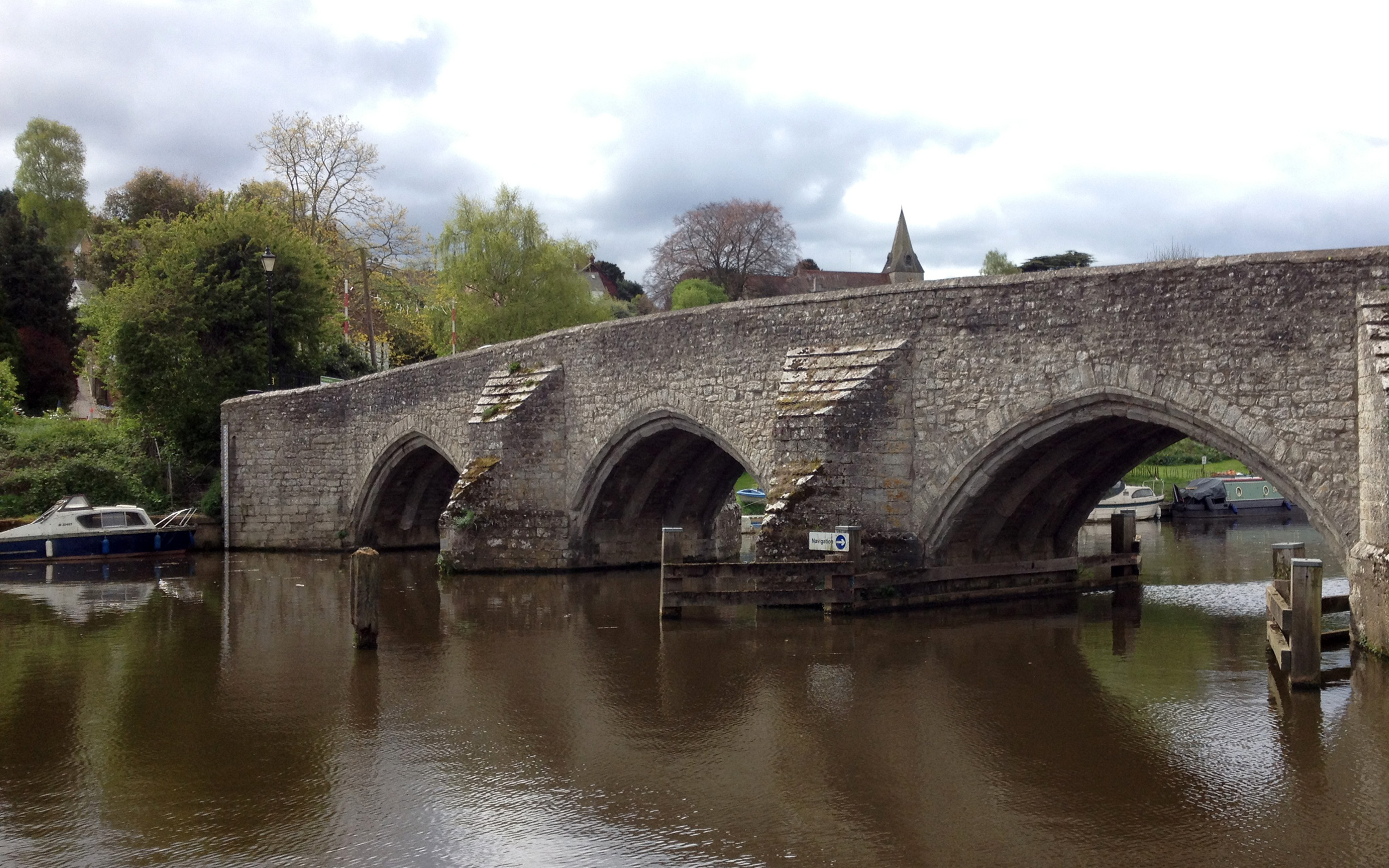
On the Thames the oldest bridge is at Radcot, near the junction with the Thames and Severn Canal at Lechlade. The three-arch bridge now crosses a backwater. It is believed to date from the early 13th century, slightly pre-dating New Bridge further downstream near the confluence of the Thames and the Windrush. The Nene also has some old bridges, the most notable being at Irthlingborough with 19 arches and built during the 14th century.
On the River Dee in Chester a bridge was recorded in the Domesday Book, and the Old Dee Bridge was rebuilt in 1387 from red sandstone with seven arches, all with different dimensions. Cambridge offers the unique experience for powered craft of navigating the Backs. This is the stretch of the River Cam flowing behind several of the colleges, giving the classic view of King’s College Chapel. There are many old bridges to negotiate as well as punt traffic, so it is only permitted in winter.
Role of the Church
In medieval England it was often religious communities which built and maintained bridges. This is because they possessed the capacity to raise finance and the necessary architects and builders. Abingdon Bridge on the Thames was built in 1446 by the Fraternity of the Holy Cross. Radcot Bridge used to be surmounted by a cross, in accordance with the sacred character of bridges. Indeed indulgences were granted by the Church to those who contributed to bridge building and repairing.
It was common across Europe to build chapels on or near bridges. They catered for the spiritual needs of travellers and pilgrims. Many chapels were established as chantries, where a priest would say masses for passers-by and for the repose of the souls of the bridge’s benefactors. They were swept away by the Reformation through the Abolition of Chantries Acts of 1547 and 1549. Only four survive – at Bradford-on-Avon; St Ives on the River Great Ouse; Wakefield on the River Calder; and Rotherham on the River Don.

There was relatively little further major bridge building activity for the next two hundred years. The coming of the canals changed all that.
Canal Bridges
The cutting of canals across the landscape divided estates and farms as well as roads and tracks. Canal builders had to reconnect them by providing large numbers of bridges. We are fortunate that many of the bridges have survived in their original form. Sometimes the canal engineer was responsible for the design of the bridges and there are examples by Brindley, Rennie and Telford. However they were often subcontracted to local builders. Constructed from local materials, they blend into the surroundings in a way which has been enhanced by weathering and mellowing over time.
Canal bridges are many and varied (Canal and River Trust alone is responsible for over 3,000). Most were built during the 80 years from 1760 to 1840. There are two basic types: fixed and moveable.
Fixed Canal Bridges
The single-arched humpback bridge is by far the most common type, carrying a minor road or providing agricultural access. Local materials include stone (in the north of England and the Cotswolds); red brick (in the Midlands and the south); Birmingham ‘blue brick’; and later cast iron. More recent additions or replacements have used modern materials such as reinforced concrete or steel.
Even the simple humpback bridge can be visually striking. Brindley’s unusually wide arch at Great Haywood Junction in Staffordshire must be one of the most frequently photographed.
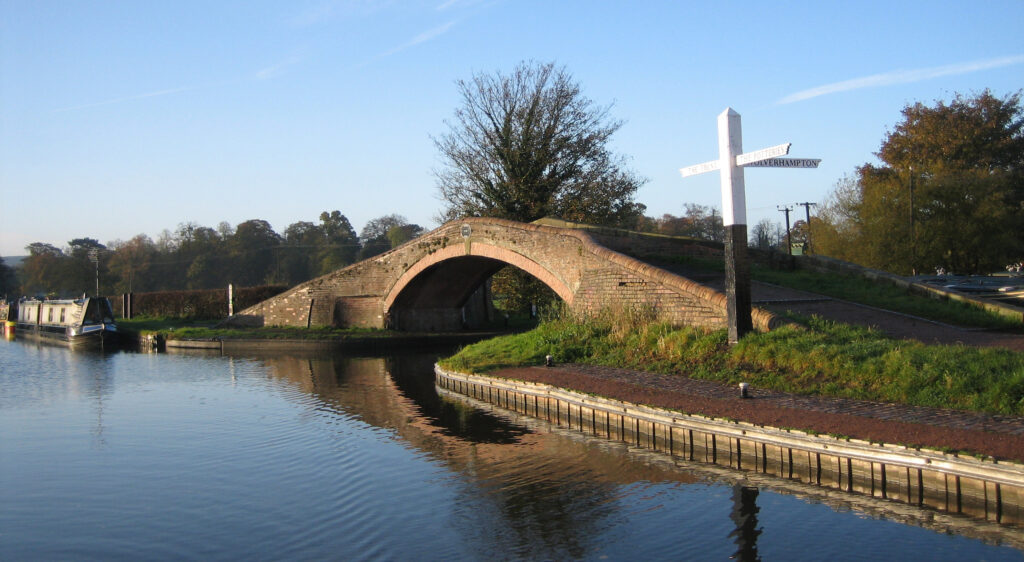
The high bridges spanning the Shropshire Union Canal’s deep cuttings are up to four times as high as normal bridges. Early bridges were all aligned so that they crossed the canal at right angles. However, in 1797 William Jessop designed the first true skew bridge, March Barn Bridge on the Rochdale Canal. Jessop used the method developed by William Chapman for the Kildare Canal in Ireland, with winding courses of stone to solve the problem of the angle.
Where canals crossed estates whose owners needed to be kept happy, much grander designs of bridges were used. Examples include Cassiobury Park at Watford on the Grand Union Canal and Chillington near Brewood on the Shropshire Union Canal. There is also the Gothic-style Drayton Turret footbridge over a swivel bridge on the Birmingham & Fazeley Canal near Sir Robert Peel’s Drayton Manor.
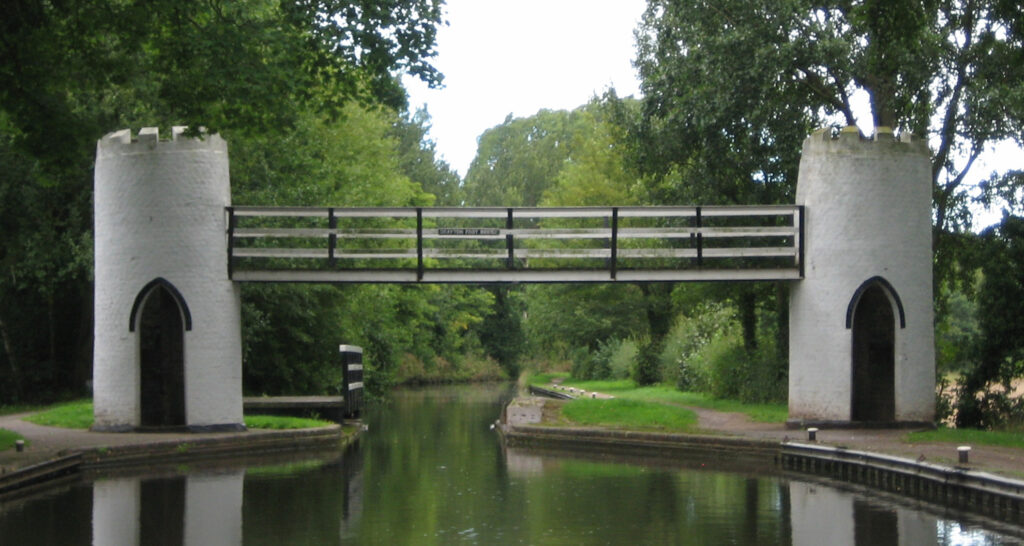
The unusually-shaped Cherry Eye Bridge on the Caldon Canal is also thought to be in deference to the local landowner (its name comes from a condition of the local ironstone miners’ eyes).
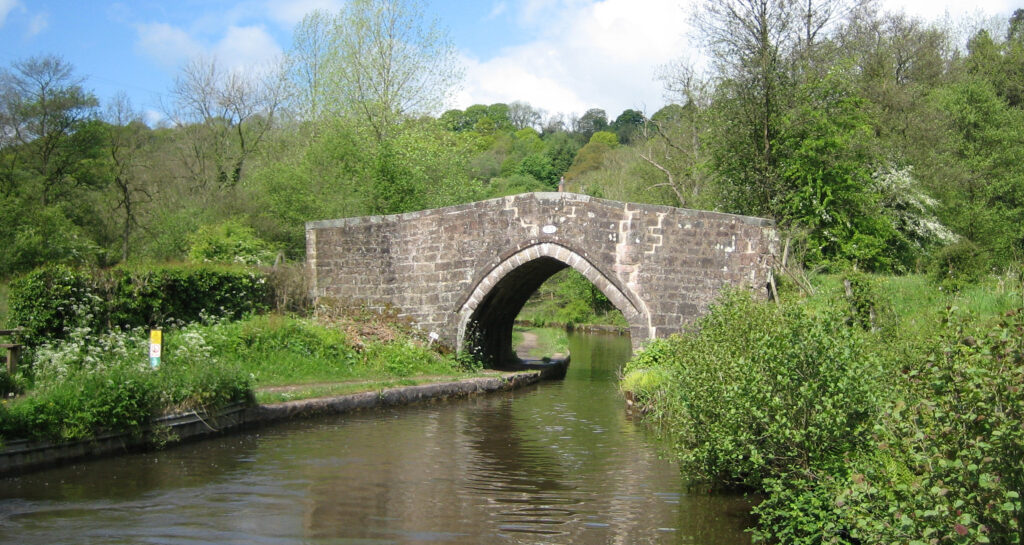
Many interesting and distinctive features of canal bridges were developed because they were needed to work the canals.
- Wear: Generally the towpath continues through the arch of the bridge, but this soon led to wear from constant abrasion by boat lines. Cast-iron protection plates were later installed on the bridge sides, which in turn acquired deep grooves.
- Dealing with towropes: Sometimes the narrowness of the arch did not allow for a towpath, and a narrow arch or small tunnel was provided for the horse. One way of dealing with the towrope in this situation was to use a split bridge with twin arms leaving a central gap for the rope. Examples of this can be seen on the Stratford-upon-Avon Canal in particular. Where the towpath changes from one side of the canal to another, a special form of bridge was designed to stop the towrope being tangled. These are known as roving, turnover or ‘snake’ bridges and are especially common on the Macclesfield Canal. They have such beautifully flowing lines that they are one of the most attractive waterway features.
- Crossing locks: Many locks have small bridges at the tail to avoid the need to use the walkways on the gates. These may be wooden, brick or concrete.
- Night navigation: On some canals such as the Leeds and Liverpool the bridge arches were whitewashed and the centre of the navigable bridge hole marked with a vertical stripe. These features can still be seen.
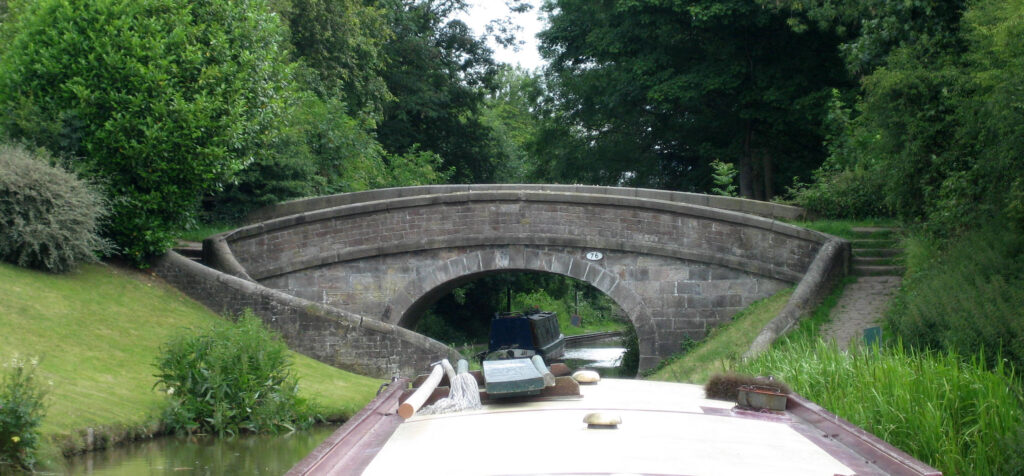
Once the use of cast iron for bridges was established at Ironbridge on the River Severn in 1781, it became an increasingly common material for canal bridges. Its strength and lightness enabled longer, flatter arches. The Horseley Ironworks of Toll End in Birmingham developed a signature bridge design. This was used widely around the BCN over the period 1820-30, and at Braunston Junction between the Oxford and Grand Union Canals. Another notable example is the Britannia Foundry Derby bridge at Hawkesbury Junction between the Coventry and Oxford Canals.
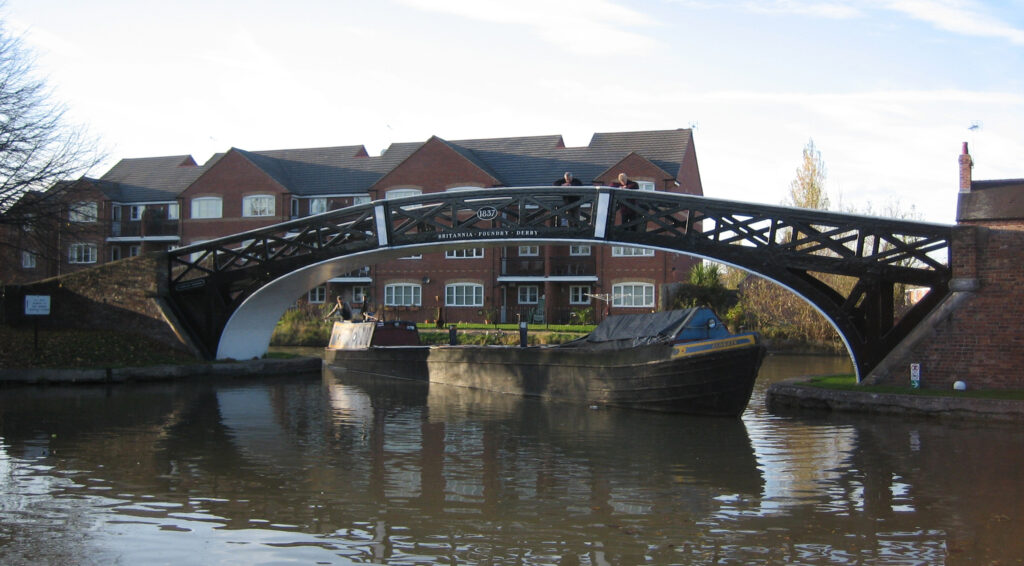
Later canals have grand bridges across deep cuttings. Perhaps most famous is Telford’s Galton Bridge, 75 feet above the Birmingham Main Line. The design is similar to his Holt Fleet Bridge and Mythe Bridge over the Severn. These were later followed by William Tierney Clark’s designs for Marlow Suspension Bridge; the original Hammersmith Suspension Bridge over the Thames; and perhaps most impressively by Brunel’s Clifton Suspension Bridge over the Avon Gorge below Bristol.
The coming of the railways brought new forms of bridge to the canal, starting at Patricroft Bridge on the Bridgewater Canal. This was designed by George Stephenson to carry the first passenger railway (the Liverpool and Manchester Railway) across the first major industrial canal. Some spectacular bridges and viaducts followed, including two particularly striking Pennine examples, both skewed: the castellated Gauxholme Viaduct over the Rochdale Canal near Todmorden; and the Saddleworth Viaduct carrying the railway over the Huddersfield Narrow Canal near Uppermill, which itself is crossing the River Tame on the Saddleworth Aqueduct. Also memorable are Brunel’s red-brick railway bridges over the Thames at Moulsford, Basildon and Maidenhead.
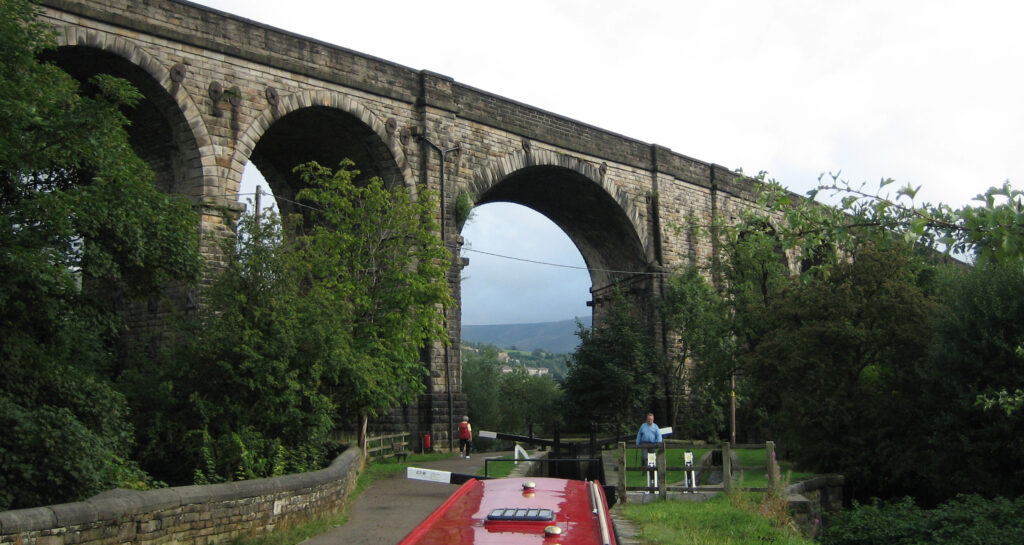
Completing the picture are the bridges that carry pipes and other industrial features over waterways. They range from simple pipes, to the Tata chemicals works that straddle the Trent and Mersey Canal at Wincham near Northwich.
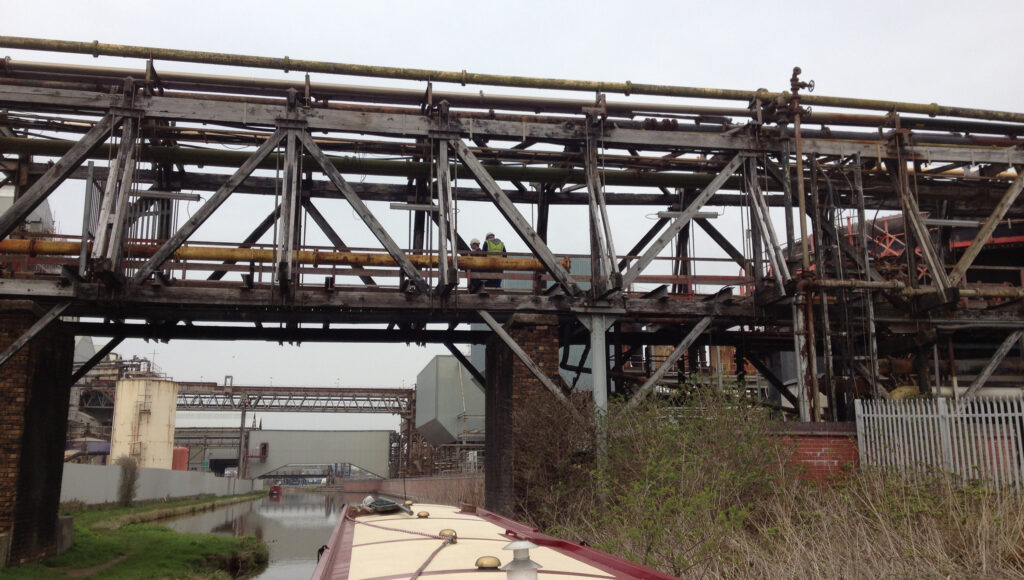
Moveable Canal Bridges
Moveable bridges are cheaper to build but more expensive to maintain, and can cause delays for both boats and traffic crossing the bridge. They tend to be mainly used for farm or pedestrian access and on navigations used by large ships. In England and Wales moveable bridges are generally operated by the boat user except on the large navigations, whereas in Scotland this has been much less common.
There are three main types:
Bascule bridges or drawbridges
These are often referred to as lift bridges and lift up from one side of the waterway. They are counterweighted and usually operated manually or with a windlass. Most are found on narrow canals such as the Llangollen Canal and South Oxford Canal. However the broad Basingstoke Canal has a powered lift bridge at North Warnborough. Broad lift bridges are also used on the Lowland Canals in Scotland.
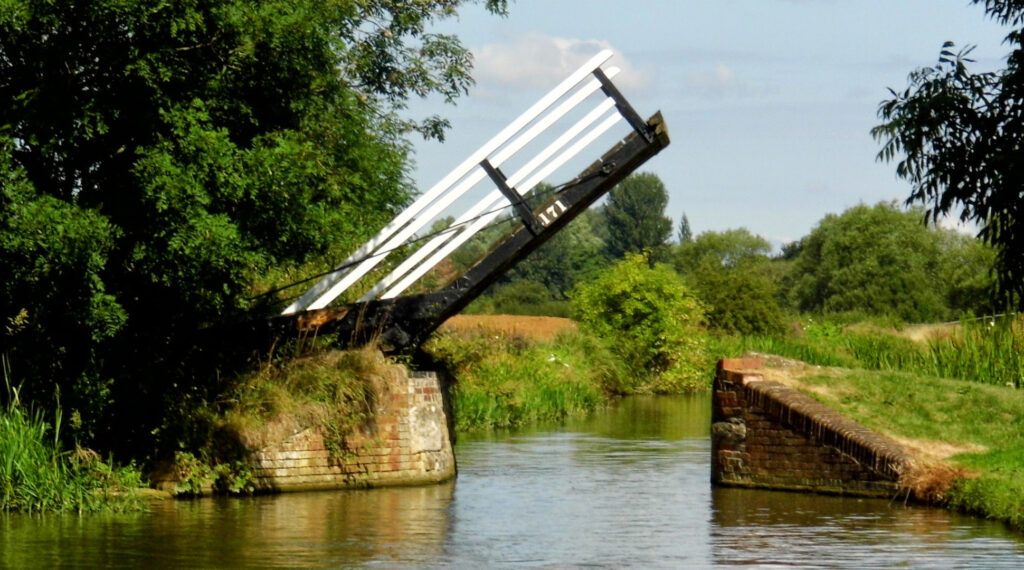
Swing, swivel or turnbridges
These are simpler, turning round a single point. Usually they are pivoted on one bank, though there was a railway swing bridge at Endon on the Caldon Canal which pivoted in the middle of the waterway. Swing bridges are especially common on the Leeds and Liverpool Canal, where many have been converted to electrical operation. They are also common on waterways used by tall vessels, such as the Gloucester and Sharpness Canal, the Manchester Ship Canal, the disused Sankey Canal, the Yorkshire waterways and the Weaver Navigation.
When railways were first built they generally crossed canals on the level in order to avoid the need for earthworks and gradients. For this reason they used swing bridges, as can be seen near each end of the Caledonian Canal at Banavie and Clachnaharry. The early exception was George Stephenson’s Liverpool and Manchester Railway, which crossed the Sankey Canal on the 1830 Sankey Viaduct near Earlestown – the earliest major railway viaduct in the world.
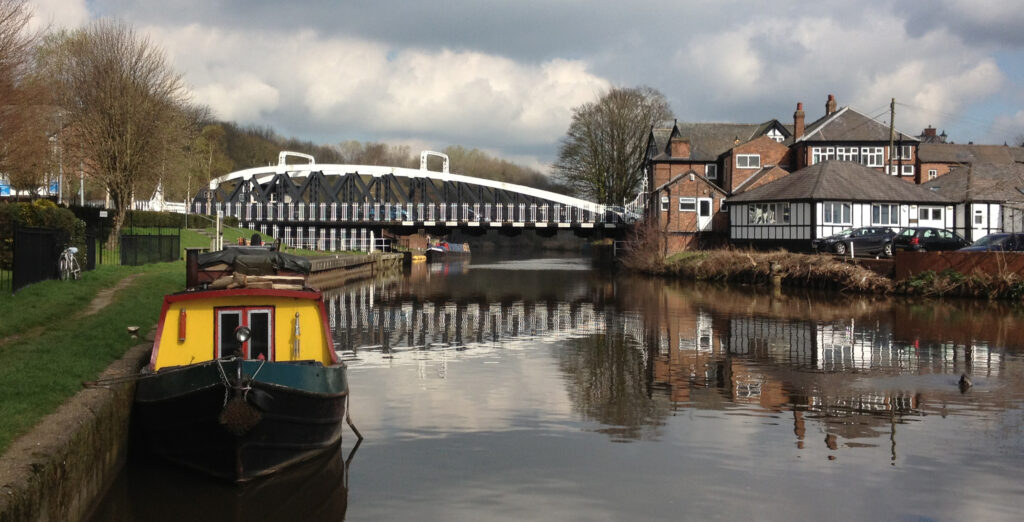
Vertical lift bridges
Here the bridge deck remains horizontal while being lifted vertically. The Huddersfield Broad Canal has the Turnbridge, also known as the Locomotive Lift Bridge, which was originally operated by windlass but is now electrified. In 1934 West Riding County Council built an electric lift bridge across the Barnsley Canal near Royston, but the canal was abandoned in 1953. Also opened in 1934, the Tees Newport Bridge was the first large vertical-lift bridge in Britain. It links Middlesbrough with Stockton-on-Tees. It no longer lifts, but still acts as a road bridge.
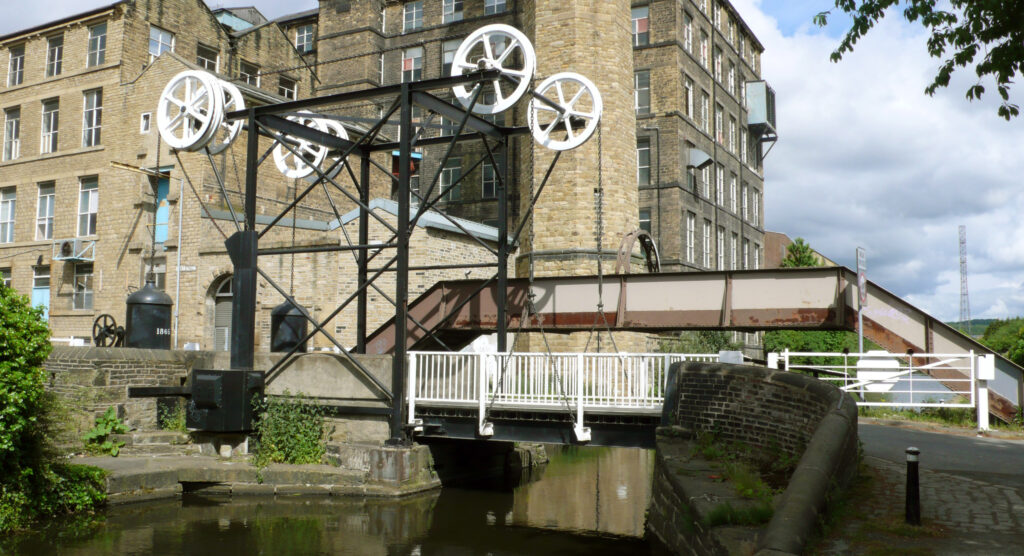
Two modern examples have been built across the Manchester Ship Canal. The Centenary Bridge is a road bridge linking Eccles with Trafford Park. It was opened in 1994 as part of the Manchester Ship Canal’s centenary celebrations. The Salford Quays Millennium Bridge, also known as the Lowry Bridge, is a footbridge opened in 2000 beside the Lowry Centre. It links Salford Quays with Trafford Wharf and the Imperial War Museum North. It has a lift of 60 feet and a custom lighting system, and is featured in the opening of the BBC North West Tonight TV news show.
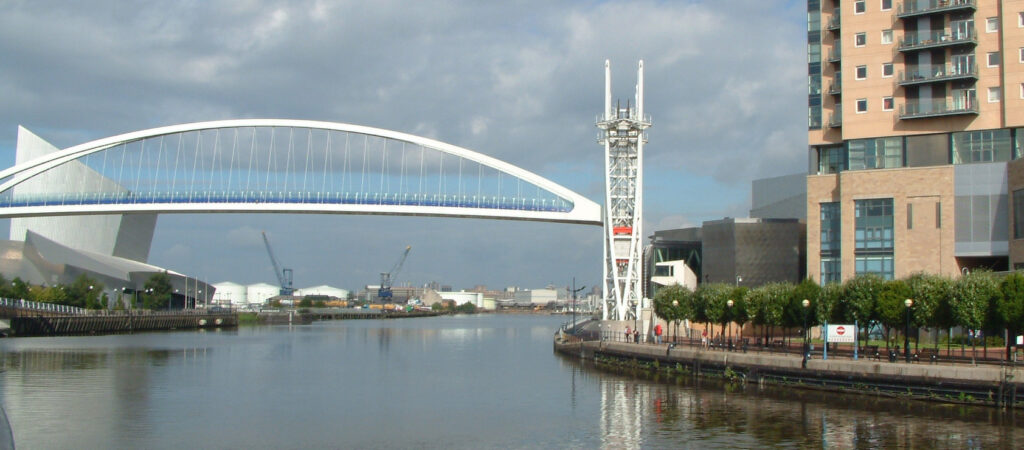
Other rarer types of moveable bridge include:
Transporter bridges
These carry a gondola across a waterway, suspended from a tall span on wires or a metal frame. The concept was invented in 1873 by Charles Smith, the manager of an engine works in Hartlepool. It was useful in locations where it was impractical to build the long approach ramps needed to reach a high span, and in places where ferries are not easily able to cross. However transporter bridges can carry only a limited load and the idea has been little used since traffic grew.
The Widnes and Runcorn Transporter Bridge was Britain’s first transporter bridge and the largest of its type ever built in the world. Completed in 1905, it crossed the River Mersey and the Manchester Ship Canal. The two towers were 180 feet high and the transporter car was designed to carry 4 two-horse farm wagons and 300 passengers. It took 2½ minutes to cross in reasonable conditions. It continued in use until 1961, when it was replaced by the conventional Silver Jubilee Bridge and demolished.
There are only three remaining transporter bridges in the UK: the Tees Transporter Bridge in Middlesbrough, the Newport Transporter Bridge across the River Usk in Wales (currently closed for restoration) and the Warrington Transporter Bridge (now disused). The Royal Victoria Dock Bridge in East London is a modern footbridge designed to allow use as a transporter bridge but currently only used as a high-level footbridge.
Roller bridges
This is another way to tackle the problem of crossing navigable water in flat surroundings without needing earthworks and excessive gradients to reach a high bridge. An amateur industrial archaeologist recently rediscovered a railway rolling bridge across the abandoned Ulverston Canal in Cumbria. The bridge was built in 1883 by the engineer Frank Stileman. It carried the railway track diagonally and crossed the canal at towpath level. To enable boats to pass, the central part of the bridge was rolled back on wheels into a small dock built into one bank. The bridge was listed in 2012 and is believed to be the only surviving example of its kind in Europe. There is also a modern rolling footbridge across the Forth and Clyde Canal at Speirs Wharf in Glasgow.
Modern Bridges
In the 20th century the focus on building and improving roads led to the upgrading of existing bridges and the building of new ones. Highway authorities started replacing or widening original canal bridges before the Second World War, often with rather utilitarian structures. The motorway network then made a substantial impact. The first section of the M1, opened in 1959, included a crossing of the Northampton Arm of the Grand Union Canal almost above Lock 12. The concrete pipe-like structure has been considerably enlivened by murals depicting the history of Northampton and the canal’s natural history, painted by local school children working with the IWA Northampton Branch.
On the BCN the elevated section of the M5 runs to the north west of the city centre across Titford Pools and is built directly above the Old Main Line in Oldbury. There is an unusual juxtaposition of transport routes where Telford’s Steward Aqueduct carries the Old Main Line across his New Main Line, which in turn is crossed by the Birmingham and Wolverhampton section of the West Coast Main Line railway and above that the M5.
The M5/M6 junction at Gravelly Hill north east of Birmingham city centre, known as Spaghetti Junction, is more or less directly above Salford Junction. Again this is a fascinating story of Britain’s transport infrastructure, on multiple levels. The Grand Union Canal, Tame Valley Canal and Birmingham & Fazeley Canal meet at Salford Junction, as do the motorways, the A38 and A5127 roads, the Cross-City and Walsall railway lines, the Rivers Tame and Rea and Hockley Brook, as well as electricity lines and gas pipelines. The design requirements included the placing of the pillars to allow a horse-drawn narrowboat to pass without its towrope being fouled.
Perhaps the most intriguing media appearance of Spaghetti Junction is in the 1973 film Take Me High, when Cliff Richard sped below it on a hovercraft. This little-known film foresaw the regeneration of Birmingham around its canals, as well as the gourmet burger!
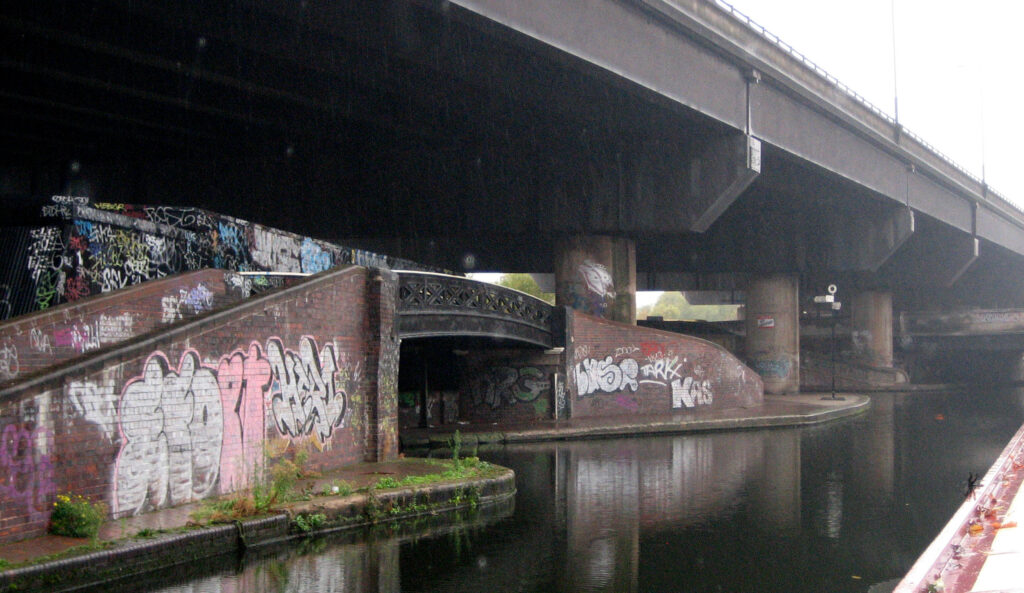
One of the most recent motorway bridges is the M5 culvert on the Droitwich Junction Canal. This originally carried the Body Brook and now has another role as part of the restored canal. It has an exceptionally low air draft of a nominal 6 feet, which can be further reduced by the flow into the canal from the Brook.
The Millennium in 2000 brought a wide range of interesting new bridges, including Millennium Bridges in Exeter, Glasgow, London, Teesquay (Stockton-on-Tees) and York. A particularly unusual example is the Gateshead Millennium Bridge. This is a tilt bridge, with a deck for pedestrians and cyclists and a supporting arch. To allow boats to pass, the arches rotate together around a pivot on each side of the river – hence its nickname of the ‘winking bridge’. Only two others of this type are known, both in Belgium.
Innovative bridges are also popular as part of regeneration programmes, as at Salford Quays.
Other examples include
- Merchant’s Bridge across the Bridgewater Canal at Castlefield in Manchester
- Islington Place Bridge over the Birmingham & Fazeley Canal at Farmer’s Bridge in Birmingham
- Diglis Bridge across the Severn in Worcester
- The Infinity Bridge in Stockton-on-Tees, named because the bridge and its reflection make up an infinity symbol.
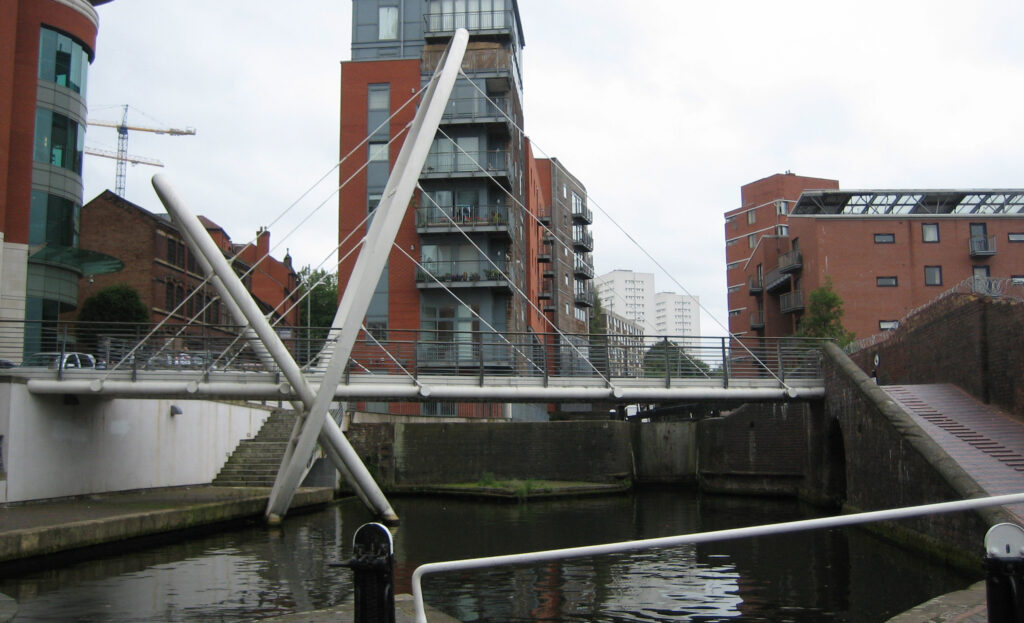
Paddington Basin on the Paddington Arm of the Grand Union Canal in London has two unusual bridges. It used to have a third, the Helix Bridge, but this was removed in 2013. It was a glass and steel pedestrian bridge with a helical frame which rotated as the bridge retracted, to look as if it was corkscrewing across the canal. The two remaining bridges act as both pedestrian crossings and moving pieces of public art. The Fan Bridge splays like a fan as it rises, while the Rolling Bridge curls itself up into a ball.
Can you help #SaveWaterwaysHeritage?
Britain’s canals and rivers are a unique, living heritage – they tell the story of our industrial past. Yet that heritage is at risk – from urban development, lack of protection, loss of skills and knowledge, and climate change.

